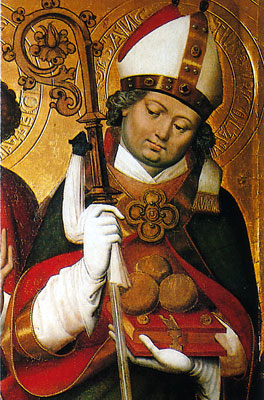 Minus all the Western commercial hoopla of 25 December, 300 million members of the Eastern Orthodox Church celebrated its Christmas today. The day is celebrated on January 7 according to the old Julian calendar by the Russian, Serbian, Georgian and Jerusalem Orthodox Churches and Mount Athos monasteries commemorate the birth of Jesus 13 days after Western Christmas. Unlike the Catholic Church where the Pope in preeminent, there are 14 autocephalous churches in the Orthodox community, though the mother church is Ecumenical Patriarchate of Constantinople, the “first among equals”. Photo: Orthodox priests lead a Christmas service at the Bosnian Orthodox Church in Sarajevo (Amel Emric / AP)
Minus all the Western commercial hoopla of 25 December, 300 million members of the Eastern Orthodox Church celebrated its Christmas today. The day is celebrated on January 7 according to the old Julian calendar by the Russian, Serbian, Georgian and Jerusalem Orthodox Churches and Mount Athos monasteries commemorate the birth of Jesus 13 days after Western Christmas. Unlike the Catholic Church where the Pope in preeminent, there are 14 autocephalous churches in the Orthodox community, though the mother church is Ecumenical Patriarchate of Constantinople, the “first among equals”. Photo: Orthodox priests lead a Christmas service at the Bosnian Orthodox Church in Sarajevo (Amel Emric / AP)At the 1459 Council of Florence monks from the self-governing Mt Athos in Greece refused to let Catholic and Orthodox Churches in return for Western military help against the Turks. As a result Constantinople fell to the Ottomans but Orthodoxy survived doctrinally intact. In today’s Istanbul as in many places across southern and eastern Europe, Orthodox Christian worshippers plunged into chilly waters to retrieve crucifixes in ceremonies commemorating the baptism of Jesus. Hundreds from Istanbul's now tiny Greek Orthodox community and Greek tourists attended the Epiphany ceremony of the Blessing of the Waters. About 20 faithful leaped into the cold Golden Horn inlet to retrieve a wooden cross thrown by the spiritual leader of the world's Orthodox Christians, Ecumenical Patriarch Bartholomew I. Apostolos Oikonomou, a 40-year-old Greek man, clinched the cross. "This year I was the lucky guy," he said. "I wish everybody peace and happy New Year."
Over 5,000 worshippers gathered at Moscow’s Cathedral of Christ Our Saviour including outgoing Russian President Dmitry Medvedev and his wife Svetlana. Patriarch Kirill, the head of the Russian Orthodox Church, called on the congregation to withstand the “cult of hasty lucre”. Archpriest Sergius Zvonarev of the Moscow Patriarchate said the day was both a solemn ritual and joyous celebration, Zvonarev said the Russian Orthodox Church remained loyal to the Julian calendar which regulated church life and traditions for centuries. “It reveres these traditions as the entire civilized world used to live by them in the past,” he said.
Orthodox Christians gathered in Bethlehem in front of Palestinian Prime Minister Salam Fayyad in the Church of the Nativity. Barely days after a fight between various Christian sects over territorial rights in the church, the Mayor of Bethlehem Victor Batarseh said the theme of this year’s celebration was Palestine celebrates hope. “Our message in these days is love and peace to all especially in the Holy Land”, Batarseh said. Over 2,000 scouts from all over the West Bank held a parade through Bethlehem with their marching bands and bagpipes.
Many in Bethlehem say the best band is the Syriac Orthodox Scouts’ pipers. Bethlehem’s Syriac Orthodox community is proud to trace its roots to the ancient Aramean peoples and are among the few people left that speak the language of Jesus, Aramaic. The scouts were established in 1958 and became internationally successful in sports in the 60s and 70s. After the Oslo Accords, their pipers became President Yasser Arafat’s military band. One former band member said they were in Gaza playing the bagpipes for Arafat when the news of Rabin’s assassination was announced. “They thought it was a Palestinian who had killed him so they would not let us leave Gaza,” he said. Today they took centre stage in Manger Square.
In Egypt, Copts nervously celebrated the day as sectarian violence continued, the first Christmas in the post Hosni Mubarak era. US President Barack Obama used the occasion to call for the protection of Copts and other minorities. "I want to reaffirm the commitment of the US to work for the protection of Christian and other religious minorities around the world," he said. The call comes after the military rulers cracked down on a Coptic march in October. Coptic Pope Shenouda III commended Islamist leaders, who attended the Coptic Church service. "We all celebrate together as Egyptians,” Shenouda said.



